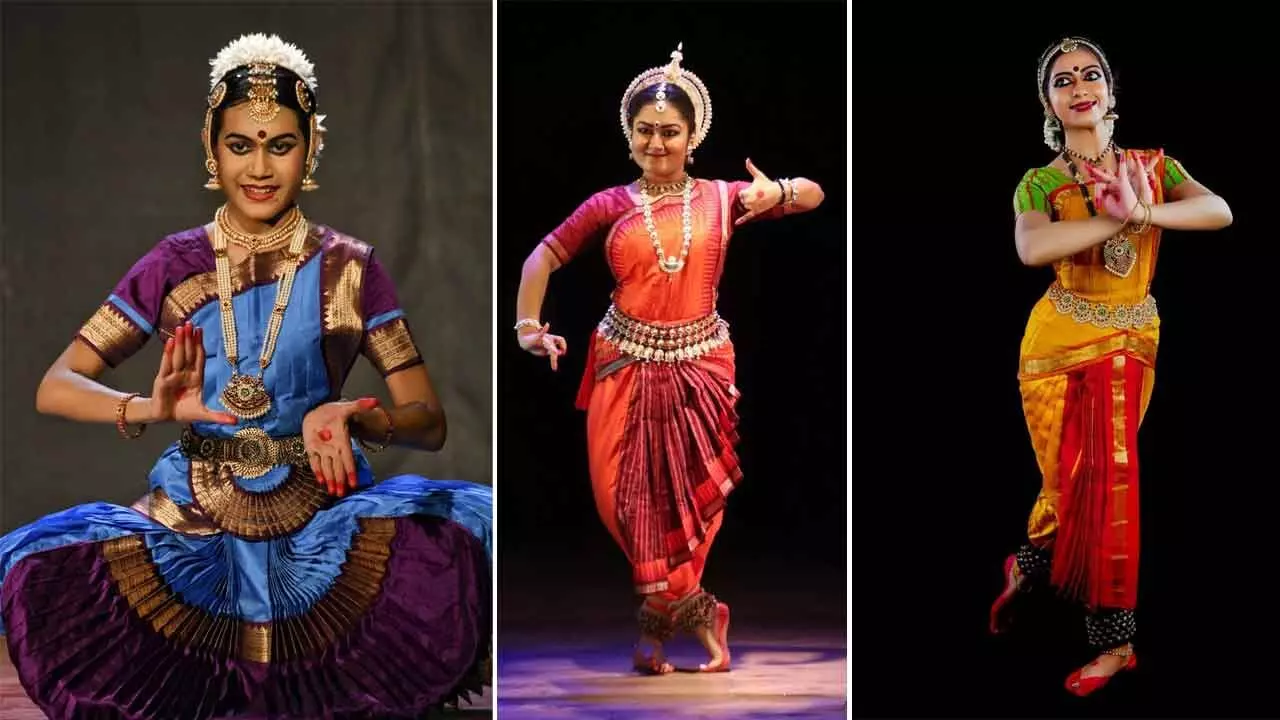The fourth edition of the ‘Abhyudaya Festival’, curated and organised by Subbalakshmi’s Nrityashala recently at Chaurah Auditorium, Secunderabad, was a vibrant celebration of classical dance styles. It was held under the artistic direction of Subbalakshmi Rana, a Kalakshetra alumna who is currently working at HPS while pursuing her Ph.D.
This nonprofit initiative was started with a clear intent to create a platform for solo, group, and traditional performances, and to facilitate meaningful knowledge sharing among artistes from different regions. Reebdhita Barua from Bengal, a student of Ratikant Mohapatra and Rajashri Praharaj, began with an Odissi recital. This measured, carefully balanced dance form was exhibited with skill by her.

‘Ganesh Vandana’, an invocatory piece paying homage to Lord Ganesha, described the deity and his attributes with finesse. ‘The Pallavi’ followed, showcasing the pure dance technique with lyricism, as the sonorous melody of this dance form was deeply absorbed by the audience. ‘Sri Ramchandra Kripalu’, a devotional item steeped in bhakti, concluded her recital.
This somewhat new addition to the repertoire was illumined by Reebdhita’s expressive ‘Abhinaya’ and ‘Nritta’. An ensemble of Subbalakshmi’s students followed with a traditional Bharatanatyam ‘Margam’ in the Kalakshetra style. A ‘Pushpanjali’ was ably performed.
The blue and red-clad students gave a crisp rendition of ‘Devi Neeye Thunai’. The ‘Brindavana Thillana’ displayed a high level of symmetry and synchronisation, testifying to their Guru’s teaching abilities. Beautiful tableaux were formed by the students at the finish of each piece.
CCRT scholarship holder Laasya Rana acquitted herself well in the solo ‘Kanchadalayadakshi Kamakshi’ in ‘Kamala Manohari’, picturising the Lotus-Eyed, enthralling Goddess with an elephant-like gait and lovely feet. The ‘pièce de résistance’ of the evening was Apoorva Jayaraman’s superb presentation. One of the most sought-after young Bharatanatyam stars in Chennai, she proved herself a worthy disciple of her Guru, the renowned Priyadarshini Govind.
Abhyudaya must be congratulated for its curative abilities in bringing such an outstanding performer to Hyderabad, thus providing a rare opportunity for a discerning audience to witness a seasoned recital. Apoorva holds a Ph.D.
in Astronomy from Cambridge and a Master’s degree in Physics from Oxford. She expressed that dance and its allied activities have brought her a fulfillment like nothing else. The exhilaration after a performance, she noted, is one of the greatest sources of satisfaction in her life.
In an ‘Aharya’ of rather sombre hue, without any superfluous accoutrements, the focus remained solely on the dance — which is as it should be, ideally. Despite the heat, her energy remained at a peak throughout, like a coiled spring kinetically energising the stage. Flawlessly impeccable technique in ‘Nritta’, allied with intensely focused ‘Abhinaya’, marked her unique style.
Her masterly sense of stage space aided the fluid precision of her rapidly exact movements. A new dimension was opened up in her seamless layering of textured tones in very complex pieces, denoting a high degree of internalisation. This was most evident in Muthuswami Dikshitar’s composition ‘Budham Ashrayami’.
Dikshitar’s works are esoteric, studded with infinite layers of meaning, and are not easy to interpret. Perhaps Apoorva’s scientific training aids her in deciphering and distilling the essential nuances of such compositions. In this piece, the planet Mercury is apostrophised.
Refuge is sought in the one praised by the Devas — the son of Chandra, the Moon, and Tara, his consort. Realized by people of intellect, he is the endower of sweet poetic knowledge and praiseworthy riches. His radiance resembles that of the saffron flower and is pleasing to Guruguha.
The enemy of Angaraka, he is adorned with jewels, the Lord of the Zodiacal Houses, without gender, esteemed by his devout attendants, ever blissful and congenial. Apoorva’s ‘Angika Abhinaya’ was fluent, vibrant, and eloquent. The flickers of her fingers, coiled in elegant ‘Mudras’, conveyed meanings impressively.
An ‘Alarippu’ was followed by the rare ‘Pada Varnam’ of Subbarama Dikshitar – ‘Entani Ne Telupudu’. Executed with brilliant ‘Jathi’ sequences, this extensive item brought kudos to Apoorva, who concluded each electric ‘Jathi’ with a dynamic flourish. The Sarangapani ‘Padam Vakkakaina’ gave scope for a rich depiction of ‘Shringara’, delineated with fidelity and showing the influence of Kalanidhi Narayanan.
The ‘Javali Mosa Jesene’ described the plight of the cheated ‘Nayika’. Languorous in tone, its subtle shades of expression — from baffled annoyance to sad irritation and displeasure, interspersed with lingering hope — created a profusely enriched palette of ‘Abhinaya’. The heroine laments that even as they lay in embrace on a flowered bed, the ‘Nayaka’ rushed off, reminded of the other woman.
Sant Soyarabai’s scintillating ‘Abhang Avagha Rang Ek Zala’ in Rajkumar Bharathi’s melodious music brimmed with the overflowing zest of devotion. The fast-paced piece thrilled the audience, concluding a memorable performance to ringing applause..
Entertainment

Abhyudaya Festival 2025 Celebrates the Spirit of Classical Dance

The fourth edition of Abhyudaya, curated by Subbalakshmi’s Nrityashala, brought together brilliant classical performances under one roof at Chaurah Auditorium. From Odissi to Bharatanatyam, the evening was a vibrant showcase of talent, tradition, and artistic excellence















